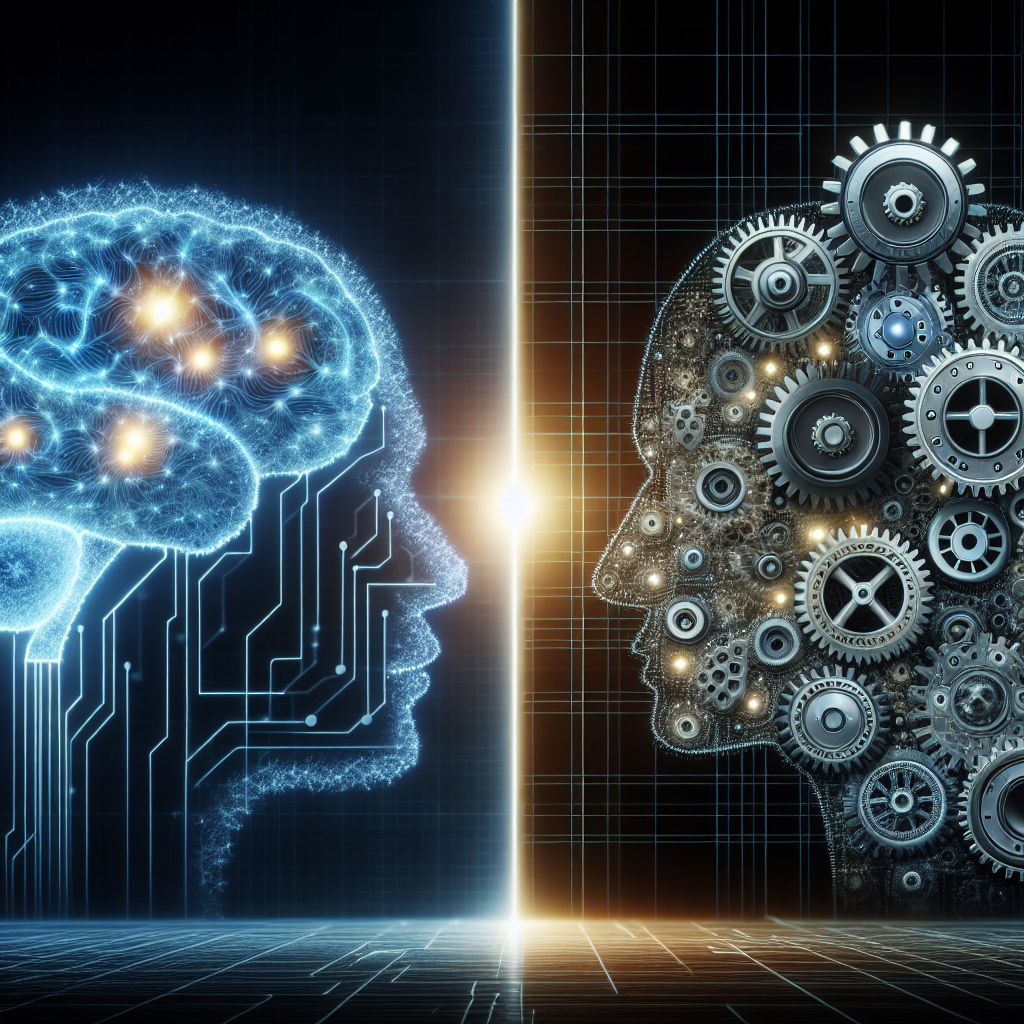AI vs Machine Learning: Understanding the Differences
In today’s digital age, terms like Artificial Intelligence (AI) and Machine Learning are often thrown around interchangeably. However, there are distinct differences between the two concepts. Understanding these differences is crucial for businesses and individuals looking to leverage these technologies for their advantage. In this article, we will delve into the definitions, applications, and differences between AI and Machine Learning.
What is Artificial Intelligence (AI)?
Artificial Intelligence, or AI, refers to the simulation of human intelligence processes by machines, such as learning, reasoning, problem-solving, perception, and language understanding. AI aims to create machines that can think, learn, and adapt like humans, enabling them to perform tasks that typically require human intelligence.
There are two types of AI: Narrow AI and General AI. Narrow AI, also known as Weak AI, is designed for a specific task, such as facial recognition or virtual assistants like Siri or Alexa. General AI, on the other hand, is a more advanced form of AI that can perform any intellectual task that a human can.
Applications of AI include speech recognition, image recognition, natural language processing, autonomous vehicles, healthcare diagnostics, and many more. AI has the potential to revolutionize industries by increasing efficiency, reducing costs, and improving decision-making processes.
What is Machine Learning?
Machine Learning is a subset of AI that focuses on the development of algorithms that enable computers to learn from and make predictions or decisions based on data. In other words, Machine Learning allows machines to learn from experience without being explicitly programmed.
There are three types of Machine Learning: supervised learning, unsupervised learning, and reinforcement learning. In supervised learning, the algorithm is trained on labeled data, where the correct answer is provided. In unsupervised learning, the algorithm is trained on unlabeled data, where the system identifies patterns and relationships on its own. In reinforcement learning, the algorithm learns by interacting with its environment and receiving feedback in the form of rewards or penalties.
Machine Learning is utilized in various applications, such as recommendation systems, image recognition, fraud detection, predictive maintenance, and more. Machine Learning algorithms have the ability to analyze large volumes of data and extract valuable insights, enabling businesses to make data-driven decisions.
Differences between AI and Machine Learning
While AI and Machine Learning are closely related, there are key differences between the two concepts. The main difference lies in the scope and capabilities of each technology.
AI is a broad field that encompasses various technologies and techniques aimed at creating intelligent machines. AI systems can perform tasks that typically require human intelligence, such as understanding natural language, recognizing images, and making decisions. Machine Learning, on the other hand, is a subset of AI that focuses on developing algorithms that enable machines to learn from data and make predictions or decisions.
Another difference between AI and Machine Learning is the level of human intervention required. AI systems can operate autonomously and make decisions without human intervention, whereas Machine Learning algorithms require human input in the form of training data and parameters.
Furthermore, AI systems can handle a wide range of tasks and adapt to new situations, while Machine Learning algorithms are typically designed for specific tasks and may not generalize well to new scenarios.
FAQs
1. What is the difference between AI and Machine Learning?
AI is a broad field that aims to create intelligent machines capable of performing tasks that typically require human intelligence. Machine Learning is a subset of AI that focuses on developing algorithms that enable machines to learn from data and make predictions or decisions.
2. What are some examples of AI applications?
Some examples of AI applications include speech recognition, image recognition, natural language processing, autonomous vehicles, healthcare diagnostics, and more.
3. How does Machine Learning work?
Machine Learning algorithms learn from data by identifying patterns and relationships in the data. The algorithm is trained on a dataset, which consists of input features and corresponding output labels. The algorithm learns to make predictions or decisions based on the input features.
4. What are the types of Machine Learning?
There are three types of Machine Learning: supervised learning, unsupervised learning, and reinforcement learning. In supervised learning, the algorithm is trained on labeled data. In unsupervised learning, the algorithm is trained on unlabeled data. In reinforcement learning, the algorithm learns by interacting with its environment and receiving feedback.
5. What are the benefits of AI and Machine Learning?
AI and Machine Learning have the potential to revolutionize industries by increasing efficiency, reducing costs, improving decision-making processes, and enabling businesses to make data-driven decisions.
In conclusion, AI and Machine Learning are powerful technologies that have the potential to transform industries and improve our daily lives. Understanding the differences between the two concepts is essential for businesses and individuals looking to harness the power of these technologies. By leveraging AI and Machine Learning, organizations can gain a competitive edge and drive innovation in their respective industries.

